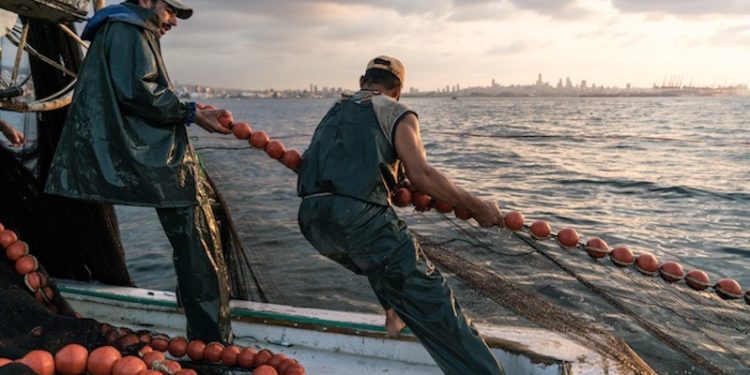While the main commercial fish species in the Mediterranean and Black Sea are still over-fished, pressure has reduced over past years, according to a report published by the FAO-GFCM, which also identifies needs to reduce by-catches and discards, and to provide small-scale fishing people with greater support.
The percentage of overexploited fish stocks is reported to have decreased by 10% – from 88% in 2014 to 78% in 2016. More efforts are needed, however, to ensure long-term fish stock sustainability, warns The State of Mediterranean and Black Sea Fisheries report.
All this indicates a need for more support for the small-scale fishing sector, which employs most fishermen and causes least environmental damage, as well as reducing by-catches and discards, and introducing more drastic measures such as significantly reducing fishing or establishing fisheries restricted areas.
This is seen as particularly urgent to safeguard the most heavily fished species, such as European hake, which is fished nearly six times beyond its sustainable level.
‘Fisheries provide the region with an important socio-economic balance and are essential to ending hunger and poverty,’ said GFCM Executive Secretary Abdellah Srour.
‘Sustainability may be expensive in the short term, but there is nothing more expensive than running out of fish,’ said Miguel Bernal, FAO Fishery Officer and one of the report’s co-ordinators.
Small-scale vessels make up by far the biggest proportion of the region’s fleet (83% in the Mediterranean and 91% in the Black Sea). Small-scale fishing vessels generate most employment (59%) in the sector, but generate only 26% of total revenue.
The officially reported fishing fleet operating in the Mediterranean and the Black Sea in 2017 comprises around 86,500 vessels, 6,200 units less than in 2014.
Mediterranean and Black Sea capture fisheries produce an estimated annual revenue of $2.8 billion and directly employ just under a quarter of a million people.
Threats
Mediterranean and Black Sea fisheries are under long-term threat due to the effects of increased pollution from human activities, habitat degradation, the introduction of non-indigenous species, overfishing and the impacts of climate-driven changes.
The European hake remains the species subject to the highest fishing pressure in the whole Mediterranean, followed by turbot in the Black Sea and horse mackerel in the Mediterranean. Stocks fished within biologically sustainable limits mostly include small pelagic species (sardine or anchovy), and some stocks of red mullet and deep-water rose shrimp.
Catch levels have been stable for the last few years, but are significantly down from the record years of the 1980s – to1.2 million tonnes in 2016 compared to 2 million tonnes in 1982.
The 1.2 million of tonnes comprise of 830,000 tonnes of fish caught in the Mediterranean and 390,000 tonnes of fish from the Black Sea. The bulk of catches consists of small pelagics (sardines, anchovies accounting for a third of all catches) although the catch is composed of a high number of species compared to other areas of the world.
Across, the region, the ranking of capture fisheries production in 2014-2016 continues to be dominated by Turkey (321,800 tonnes and representing 26% of total landings compared to 31% in 2013), followed by Italy (185,300 tonnes and 16%, similar to its 2013 percentage).
Algeria (96,300 tonnes and 8%) and Greece (65,700 tonnes and 5 %) also maintain the same (2013) percentages in landing contribution. Both Tunisia (185,300 tonnes) and Croatia (74,400 tonnes) show an increase compared to 2013 (from 7 to 9% for Tunisia and from 3 to 6% for Croatia). Total landings for Mediterranean Spain (78,200 tonnes) decreased from 8.5% to 7% of the total).
Among subregions, the Black Sea continues to provide the largest contribution to capture fisheries production, with a 32% of the total, followed by the western Mediterranean (22% of total), the Adriatic Sea (16%), and the central and eastern Mediterranean (15% each).
Discards and incidental catches of vulnerable species still of concern
Approximately 230,000 tonnes of Mediterranean fish is discarded every year – about 18% of total catches. In the Black Sea, discards are estimated at around 45,000 tonnes or around 10-15% of total catches.
According to the report, incidental catches of vulnerable species are relatively rare events but are important because the species caught are of conservation concern. Among the vulnerable species most affected by incidental catches, are sea turtles (which appear in 8 out 10 of reports on incidental catches) followed by sharks, rays, and skates (appearing in 2 out of 10 reports on incidental catches each). Seabirds and marine mammals represent the lowest number of incidental catches, and are only occasionally included on incidental catches reports.
The report was launched on the occasion of the first GFCM Forum on Fisheries Science (Fish Forum 2018) organised at the FAO headquarters from 10th to 14th December 2018, as a recognition of the instrumental role of science in improving knowledge towards sustainable fisheries management.









